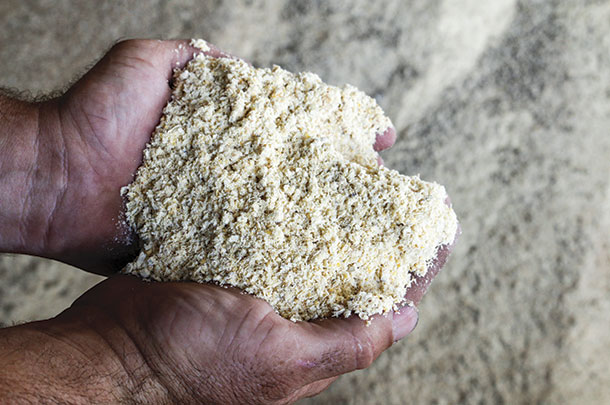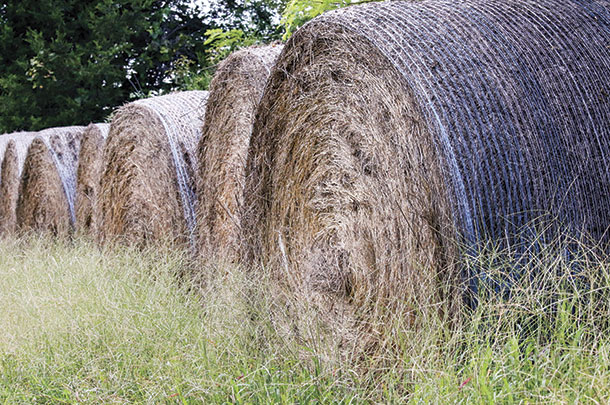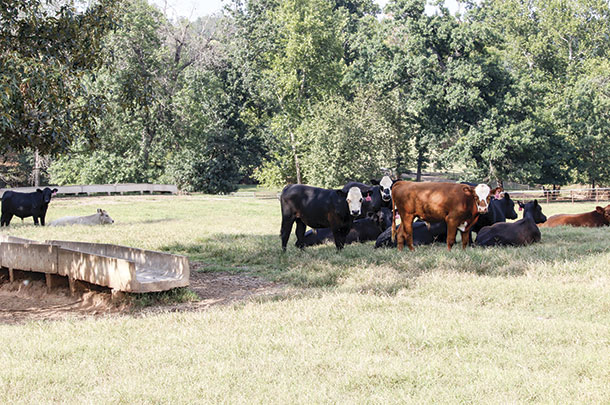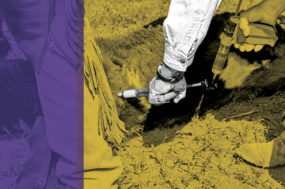It hasn’t been in the family for generations, and it wasn’t built on the backs of grandparents. It is built after the pattern new ranchers are carving from today’s economy when deep pockets or family ownership or economical support are not available: It was built on the backs of day jobs.
Tracy has worked for Superior Livestock for 20 years and still works there one to two days per week. On the side, he started renting land and buying heifers and steers as 500-weights – mostly odd cattle that didn’t fit uniform truckloads.
He sold the steers at 800-weight and heifers at 750-weight to feedlots and hoped he’d make a buck which he could combine with another buck he saved from his “day job.”
In 2001, 200 acres became available in Sebastian County, and Tracy took the deep dive into land ownership. Eventually another 130 acres were added with 80 percent of the hills cleared for bermudagrass pastures and rainwater ponds. And further down the road, another 300 acres of rented pasture was later added. Still, in the background (or maybe the foreground), Tracy worked the “day job.”
Julie has a master’s degree in agronomy and worked as an extension agent for 10 years with a technical specialty assisting producers with forage programs, which included fertility, variety selection, weed control, grazing programs and forage testing. She also has a love for show (reining) and breeding horses, and when they married in 2010, she was optimistic Tracy would learn to love them too.
She eventually gave up the extension position to work full time on the ranch but stays active assisting 4-H groups and serving on extension committees. The differences in Tracy and Julie’s expertise complement the business model – Tracy can focus on cattle, and Julie can focus on forage.
Bermudagrass alone doesn’t necessarily provide Tracy’s target 2-pound average daily gain, so Tracy feeds a mix of soyhull pellets, dried distillers grains and corn hominy at 10 pounds per day per head, year-round.

In addition, Tracy and Julie are VitaFerm dealers and regularly stock around eight products, which include the VitaCharge Stress Tubs. They use these tubs to support digestive health and promote feed and water intake during times of stress and recovery in their own stock. And with stockers, stress and recovery is the norm.
Processing plans
As stockers are received, the Leonards process the cattle and take the temperature of every head; anything with a temperature above 104ºF is treated. After a few days’ rest, they are vaccinated for infectious bovine rhinotracheitis. When calves are turned out to pasture, Tracy says, “Whenever I see a sick animal, I bring in that whole group and temp them all again.” This helps catch cattle with early, but not obvious, signs of sickness and deters a more prevalent outbreak.
Although calves are left in pastures during the winter, the Leonards feed bermudagrass hay at least a few months a year. In 2017, they put up 1,000 round bales to feed their herd and another 1,000 small square bales to sell to local co-ops for horse customers.

They started marketing the hay through Julie’s horse business. Some of Julie’s close extension friends who are horse owners began using their hay and then telling their riding friends about it, leading to an even more regional reputation of having quality hay. In 2017, they started providing hay to commercial entities beyond just the private sales.
Haying takes two to make it work. Julie says, “We are partners in the hay field. Having young foster children this summer limited me for the first time on what I was able to help with, but we almost always are baling together in the fields.”
Equipment fixes
Building a ranch where no ranch stood before takes not just a day job, not just stockers and seeded pastures, but also structures and facilities. That’s where Tracy’s third job came in – welding, pouring concrete, leveling yards and constructing facilities. He fashioned a floodgate across Little Washburn Creek that would hold cattle in when water levels were low as well as high. He built a hay barn and commodities bay with a convex, steel-beamed roof.
He designed homemade mineral feeders using crossed sucker-rods as a base under a concrete form with 2-inch angle-iron frame construction that can be moved from pasture to pasture with a bale squeeze, bale forks or loader. With concrete forms, Tracy pours concrete feedbunks in pastures to feed the supplemental commodities.

He built an arena for Julie’s use, which also doubles as a catch pen. Tracy says, “I also built a marriage-saver gate. It’s a crow’s nest built where we sort cattle. It’s for my wife – to keep her from getting run over. And that saves our marriage.”
Also next to the hay barn and commodities bay, Tracy built an impressive horse barn and set of stalls for Julie’s show horses. “Not,” he says, “because I love horses that much but because I love my wife that much.” Tracy, in fact, admits he seldom gets on a horse.
The new facilities stand in stark contrast to the old equipment the Leonards use. While they bought a new mower, tedder and rake, the rest of the equipment is old (which is a kind way of saying “maybe ancient”) and “certainly not gently used.” Tracy says, “I just can’t figure out how to wear out a Deutz-Allis tractor,” (although by the looks of it, he certainly has tried).
And finally, the Leonards have a fourth job. After the 500 head of stockers, after managing 600-plus acres of pasture and hayground, after the mineral tub business, after the show horses and building facilities, after the day job (is that five jobs? I’m starting to lose track … ), they have yet another job – 300 commercial cow-calf pairs of mixed black and Red Angus. Tracy says it’s all about spreading the risk and maximizing opportunities.
They use Angus bulls from Connealy and Final Answer genetics purchased from Jacs Ranch in Bentonville, Arkansas, and Red Angus bulls purchased from the Ludvigson Red Angus stock program based in Montana for the spring-calving herd.
Among their busy lives and many pursuits, Julie says she still misses the educational component of her former extension work. Perhaps she doesn’t realize this nontraditional ranch, standing along Little Washburn Creek, is a living classroom study on how to build a profitable enterprise on the backs of day jobs. ![]()
More photos can be seen in this slideshow.
PHOTO 1: By combining complementing talents, Tracy and Julie Leonard have built a successful nontraditional ranch on the banks of Little Washburn Creek in Sebastian County, Arkansas.
PHOTO 2: The target 2-pound average daily gain for stockers on bermudagrass is supplemented with soyhull pellets, dried distillers grains and corn hominy (shown) at 10 pounds per day per head.
PHOTO 3: The stocker program and cow-calf herd are sustained on bermudagrass pastures and bermudagrass bales in winter months. Hay is also marketed to horse customers.
PHOTO 4: Concrete feedbunks are poured in each pasture so stockers can be fed supplemental commodities year-round. Photos by Lynn Jaynes.

-
Lynn Jaynes
- Editor
- Progressive Cattleman
- Email Lynn Jaynes








